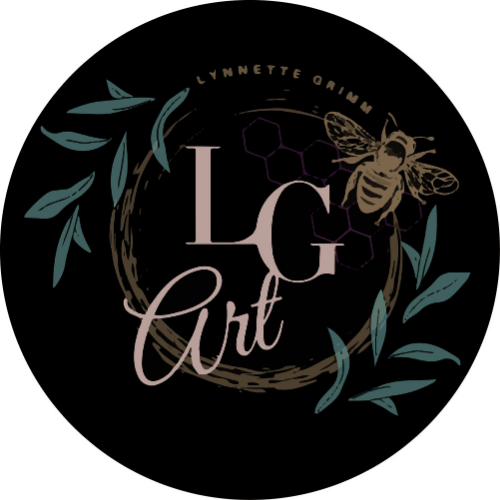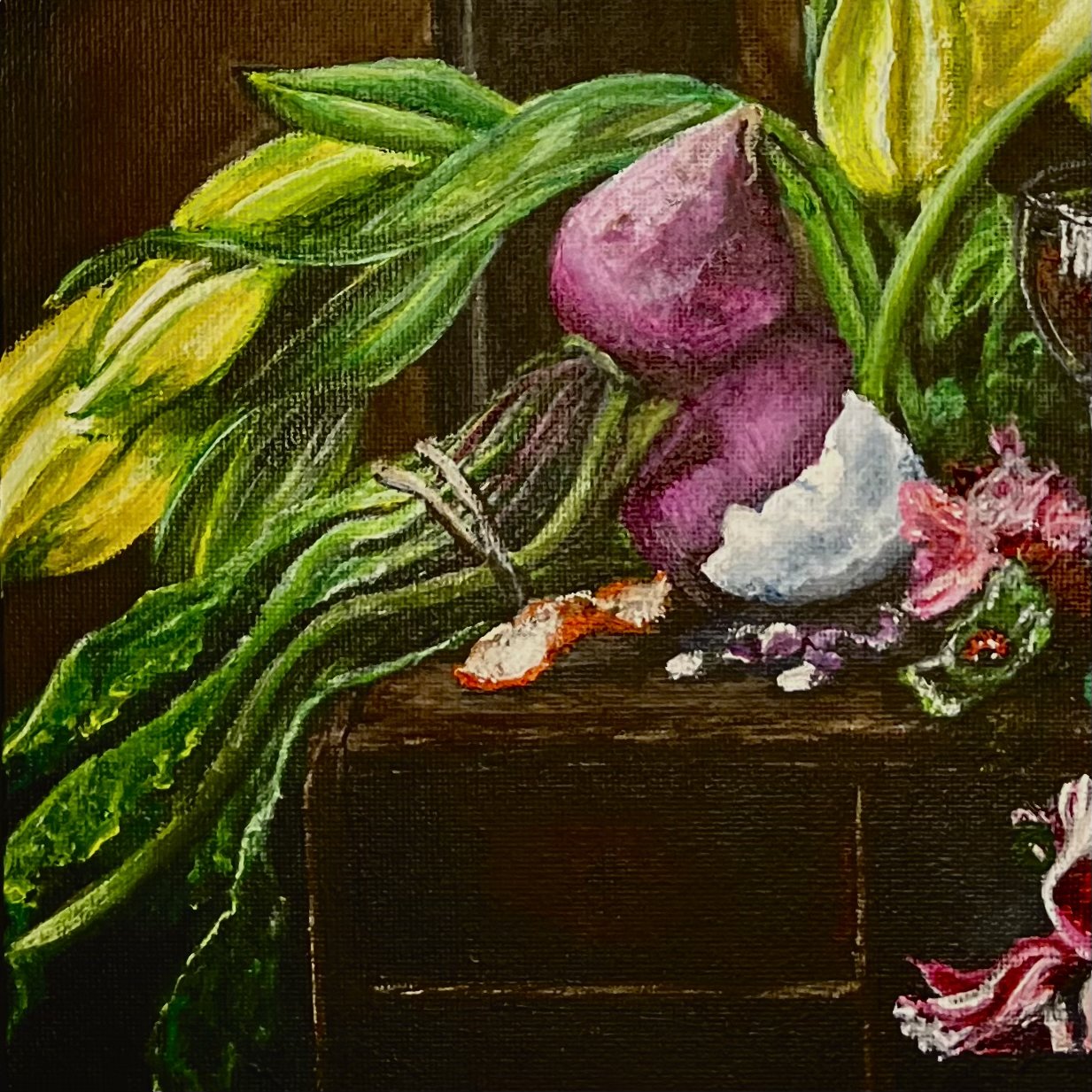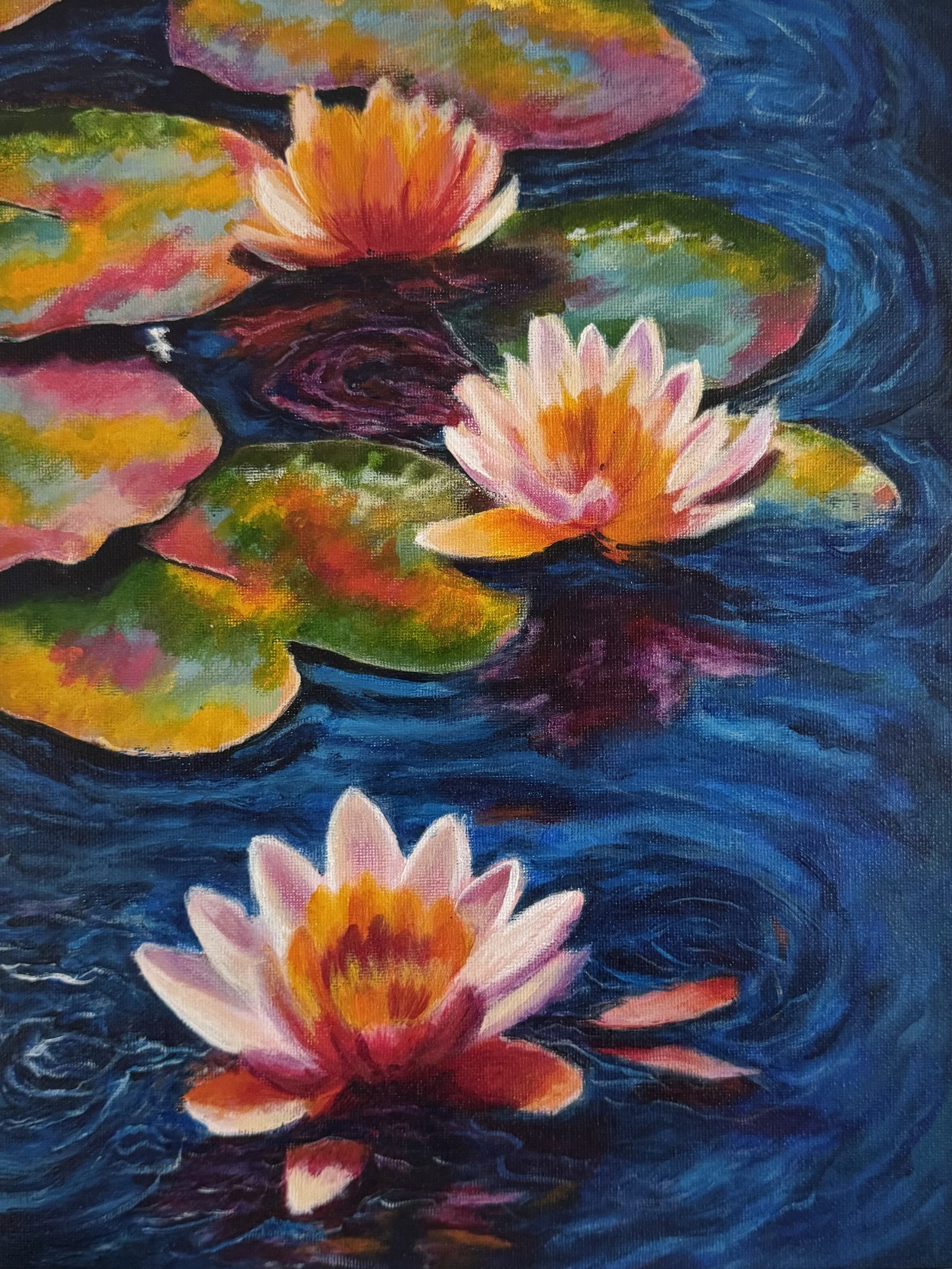The Art of Protest: Beauty in Decay and the Portrait I Can’t Not Paint
Some paintings come from rage. This one comes from truth. In this post, I share why I’m creating a protest portrait of Trump, how it fits into my Beauty in Decay series, and what it means to use art as resistance in a country unraveling by the day.
Some paintings come from curiosity.
Some from love.
And some come from the fire in your gut that refuses to burn out.
This is one of those.
There’s a portrait I’ve been circling for a while now. It’s loud, uncomfortable, heavy with symbolism—and it’s time.
Because when you live in a country where rights are eroded by the hour, where lies are louder than laws, and where people in power treat cruelty like a campaign strategy… you reach a breaking point. Or maybe, you reach a painting point.
Why This Painting, Why Now
I’m working on a protest portrait of Donald Trump. Not because I think he deserves to be immortalized—but because I believe in the power of art to name what is rotting beneath the surface.
This isn’t about caricature. It’s not satire. It’s not a joke.
This is about truth.
About symbolism.
About documenting a time in American history where decay isn’t hidden—it’s celebrated. Where the false gold is flaking, but somehow people are still polishing it.
Through my Beauty in Decay lens, I’ll be pulling from the visual language of collapse:
– Tarnished metals
– Decayed fruit
– Rotted wood
– Cracked mirrors
– Flags fraying at the seams
Because this isn’t just a portrait of a man. It’s a portrait of what we’ve allowed. What we’ve ignored. What we’ve normalized.
The Role of the Artist in Times Like These
To create is to risk.
To create protest art is to reject comfort.
To paint the thing no one wants to look at is to insist on being a witness.
As artists, we are not neutral. Our work may hang on walls—but it doesn’t stay there. It travels. It echoes. It sits in people’s minds long after they leave the gallery or scroll past the post.
And sometimes, our job isn’t to inspire. Sometimes it’s to disrupt.
What This Has to Do with Beauty in Decay
This portrait will be part of Beauty in Decay because decay is not just a natural process—it’s a political one. Institutions decay. Truth decays. Empathy, compassion, safety—all vulnerable to rot if not protected.
But even in that decay, there is clarity.
There is room for truth.
There is the stark beauty of something no longer hiding what it is.
And that, to me, is worth painting.
Memorial Day: What (and Who) Are We Really Remembering?
Memorial Day asks us to remember—but only some stories. In this post, I explore the overlooked, the uncomfortable, and the power of art to reclaim memory. As I begin my Trump protest portrait, I’m thinking about who gets honored, who gets erased, and what it means to remember with honesty.
he last Monday of May rolls in every year with flags, BBQs, furniture sales, and the language of sacrifice.
But Memorial Day is more than a long weekend. It’s supposed to be a day of collective remembrance. A moment to honor lives lost in military service.
So why does it feel like we’re all being asked to forget?
The Problem with Patriotism-as-Performance
Memorial Day, like so many national holidays, has been commercialized into something hollow. Red, white, and blue napkins. Discounted mattresses. Politicians tweeting flag emojis while actively harming the communities those lost lives were supposed to protect.
And let’s be real: the “freedoms” we’re told to be thankful for don’t exist equally for everyone. Especially not for the marginalized, the silenced, or the systemically oppressed.
We’re told to remember—but only what fits the script.
What About the Rest of Us?
What about the queer soldier who had to hide who they were?
The Black veteran denied benefits after serving?
The mother who lost her child to war and to the country’s neglect?
What about the civilians who carry trauma, the communities torn apart by policies made far from their homes, the ones we don’t talk about because they don’t make for good patriotic branding?
I think about this often. And I can’t help but feel that if we’re going to talk about memory, we need to do it honestly.
How This Ties Into My Work
As I begin my protest portrait of Trump, I’m thinking deeply about symbols:
Flags that fray.
Eagles that glare.
Gold that flakes.
The way power tries to wear the mask of virtue.
Memorial Day will be folded into this piece—because this painting isn’t just about one man. It’s about the rot beneath our rituals. The beauty that still exists despite the betrayal. The way grief, when unacknowledged, curdles into rage.
Beauty in Decay is how I process that duality.
It’s how I remember on my own terms.
Reclaiming the Act of Remembering
What if Memorial Day was more than just patriotic pageantry?
What if we made room for complexity?
For mourning and critique?
For remembering the people who aren’t named in speeches but who deserve to be honored anyway?
This May, I’m holding space for all of it. The grief, the anger, the beauty. The complexity of remembrance. The discomfort of truth.
And I’ll be painting through it—because sometimes, remembering is an act of resistance.
When the Bloom Is a Warning: Springtime in an Unraveling America
As flowers bloom and the world warms, so does the chaos. In this post, I reflect on the unsettling contrast between spring’s beauty and America’s political unraveling. From wild gardens to protest art, this is about finding meaning—and power—in what grows through decay.
Everywhere I look, things are blooming.
Magnolias burst open with defiance. Bougainvillea creeps over fences like it’s reclaiming space. Even the weeds are showing off. Nature is putting on her loudest, lushest dress—and I can’t stop thinking: what a strange time to be beautiful.
Because while spring is doing her thing, the country is coming apart at the seams.
Another wave of rights under attack. More performative patriotism, more violence masquerading as law. Each day feels like waking up to a new erosion—of truth, of autonomy, of basic human dignity.
So I paint.
When Beauty Becomes Rebellion
My Beauty in Decay series wasn’t born of politics—but it’s become impossible to separate the two. What began as a meditation on impermanence has become something closer to resistance.
There’s power in painting what is overlooked: the bruised fruit, the fallen petal, the cracked vessel. There’s defiance in saying, This is still beautiful. This still matters. This still speaks.
In the face of sanitized narratives and picture-perfect propaganda, I’m interested in showing the rot beneath the surface—and the life that insists on growing anyway.
Spring Is Not Always Gentle
We talk about spring as renewal. But spring is also upheaval.
Roots rip through soil. Buds force their way open. Rain doesn’t ask permission. It floods and overflows and makes everything messy. Spring is gorgeous—but it’s not passive.
And neither is my art.
In the coming months, I’ll be starting a new protest portrait—a piece that centers not just one man’s corruption, but the system of cruelty, denial, and decay he represents. It will be a portrait, yes—but also a reflection. A challenge. A mirror we don’t want to look into but must.
Where We Go From Here?
As the world warms and flowers bloom, I’m not finding comfort in the usual seasonal metaphors. I’m finding urgency. Wildness. Warning.
If you're feeling the same—adrift in chaos, awake in a body that doesn’t feel safe, searching for beauty that isn’t performative or polite—you’re not alone.
There is beauty in decay.
There is power in acknowledging what’s breaking.
There is hope in what keeps growing anyway.
Studio Update: What I’m Growing (and What’s Dying Off)
May is a month of transition—and my studio reflects that. In this update, I share what I’m growing, what I’ve let die off, and how my work is shifting in response to the world outside. From botanical paintings to an upcoming protest portrait, this is a look inside the evolving rhythm of my creative life.
In the thick of it.
The brushes don’t lie. Some are clean, others are stained with weeks of choices—colors I kept, colors I covered. The palette is a living map of everything I’ve tried, scrapped, and layered again. This is where the real work happens—not in the finished piece, but in the chaos of becoming. In the studio, I’m growing, shedding, and starting over—sometimes all at once.
There’s something about May—it’s not quite spring anymore, not quite summer. Everything’s in motion. Some things are blooming wildly, and others are fading before they ever fully arrived.
Honestly? My studio feels the same way.
This is the season of sorting: what’s staying, what’s shedding, and what ideas are quietly composting in the background, waiting to become something else.
What I’m Growing
Right now, I’m building toward something big—a protest portrait that’s been simmering in the back of my mind for months. It’ll take everything I’ve got: rage, restraint, symbolism, subtlety, and zero tolerance for bullshit.
But even in the heaviness, I’m finding myself drawn back to the small moments. The quiet rebellions.
Paintings like Underfoot: Autumn’s Boroughs and Meditation remind me that there is still power in softness, still fire in the ordinary. I’ve also been refining my Beauty in Decay: Botanicals collection, letting each piece expand this idea that decay isn’t the end—it’s the transformation.
I’m building layers. Not just on canvas, but in the stories I want to tell.
What I’m Letting Go Of
This month I scrapped two paintings. They weren’t bad—but they weren’t honest. I’m learning that if a piece doesn’t feel like it’s pulling from the marrow, it probably won’t hold up over time.
I’m also letting go of the idea that everything has to be polished before it's shared. There’s beauty in the process. There’s connection in the mess.
What’s Shifting
As I lean deeper into the protest work and let my studio reflect the world outside—chaotic, unjust, alive—I’m finding new symbols rising to the surface: frayed flags, false idols, stained linen, wilted glamour.
The Trump portrait is starting to take form in my mind. It’s not just about him—it’s about what we’ve let rot beneath the surface. Memorial Day will tie in, too. The symbols of remembrance, the performative patriotism, the collective forgetting… It’s all ripe for reclamation.
Where I’m Headed
Right now, I’m holding space for both rage and rest. For overgrown beauty and clean breaks. For mourning and momentum. The studio is where I get to metabolize the world—one brushstroke at a time.
And if you’re also in a season of not knowing what’s next, but trusting the work anyway—then you’re not alone. You’re in it with me.
Brushstrokes and Battle Cries: Why My Art Is a Protest
My art isn't just about beauty—it's about bearing witness. To the quiet unraveling of identity, to the resilience in decay, to the truth of what it means to inhabit a body that's been politicized simply for aging. I paint to reclaim space, to say the feminine experience is worthy, raw, complex, and powerful—even (especially) when it’s uncomfortable. This isn’t just art. It’s a protest—layered in color, shadow, and truth.
Art has always had something to say. Sometimes it's subtle, like a whisper that lingers. Other times, it’s more of a scream—a full-bodied, paint-splattered roar. I’ve found myself somewhere in between, using my work to speak to something deeply personal yet painfully universal: the feminine experience.
Now, before you picture me standing on a soapbox in a beret with a megaphone (not that it doesn’t sound fabulous), let me clarify. My art isn’t about shouting for the sake of noise. It’s about witnessing. It’s about capturing the quiet unraveling of identity that can come with aging, motherhood, and the slow decay of how society values the female body. It’s about challenging how that narrative gets written—and who gets to write it.
We live in a world where a woman’s body is regulated more than a poorly run HOA. Fertility is worshipped until it’s gone, and then suddenly we’re invisible. Menopause? Hysterectomy? Those words still make people squirm. But I’ve lived them. And instead of shrinking, I decided to paint.
Meditation, 2025
I paint peeling petals and overripe fruit. I paint cracked vessels and tangled blooms. I explore decay—but not as an ending. As a transformation. A shedding. A reclaiming. Because the feminine experience is not a linear path from maiden to mother to forgotten. It’s layered, complex, messy, and deeply, achingly beautiful.
And yes, my work is political. Because choosing to center stories that have been dismissed or overlooked is political. Choosing to say, “This matters. This body. This moment. This grief. This bloom.” That’s activism with a brush.
The Flourishing Reign of Femme (Close Up), 2025
Artists have always been mirrors and windows. We reflect, we reveal, we remind. And I don’t take that lightly. Every time I start a new piece, I think about what I want to say with it. Sometimes it’s soft. Sometimes it’s defiant. But it’s always honest.
Because for me, art isn’t just about beauty. It’s about truth. And truth—especially the kind that centers the voices of women, of queer folks, of those shoved to the margins—is a radical, revolutionary thing.
So if you’ve ever felt unseen, unvalued, or told that your story was too much, too weird, too emotional… same. That’s why I paint. That’s why I share. That’s why I’ll keep going.
Even if the world would rather look away.
"This Is Garbage": The Secret Mantra of Every Artist Who's Ever Grown
If you’ve ever stared at your own painting and thought, “This is trash,”—congrats, you’re a real artist. In this post, I dig into why we sometimes hate our own work, and how that discomfort is actually a sign of growth, evolution, and creative truth-telling.
If You Don’t Hate Your Own Work, Are You Even an Artist?
Let’s just be honest for a minute: every artist hates their own work. Okay, maybe not hate-hate, but at the very least, we all go through that rollercoaster of “this is brilliant” to “this is garbage” within, like… three brushstrokes. And if you haven’t had that moment where you step back, squint, and say, “ugh, why did I think this was a good idea?”—I both envy and slightly distrust you. 😄
But here's the thing: that little inner critic is part of the process. It’s not a flaw. It’s not a bug in the system. It’s the system.
We grow through discomfort. We evolve through dissatisfaction. Artists are constantly striving—striving for better compositions, stronger color stories, deeper meanings, tighter technique, looser technique (hello, paradox)—all while trying to express something that words can’t quite hold.
And yeah, sometimes that striving looks a lot like staring at a painting you finished a week ago and thinking, “Well, that’s not it.” But you know what? That’s good. That’s growth. That’s your inner artist calling you forward into what’s next.
I like to think of it like training for a marathon. Or maybe an Ironman Triathlon where the swim is emotional vulnerability, the bike is imposter syndrome, and the run is caffeine-fueled bursts of inspiration at 2 a.m. There are moments of flow, sure. There are even sprints—days when the muse shows up and things just click. But for the most part, art is about mental strength, endurance, and a whole lot of practice.
Athletes don’t stop training because they hit a new personal best—they push harder. They analyze, tweak, try again. Why shouldn’t we do the same? Why shouldn’t we push ourselves to become the artist we aren’t quite yet?So if you’re sitting in your studio (or at your kitchen table or your favorite coffee shop) staring at your current piece thinking, “This is trash”—congrats. You're doing it right. That tension you feel? That’s the gap between where you are and where you want to be.
And maybe we never fully close that gap. Maybe that's kind of the point. Maybe hating our work just a little is what keeps us showing up, keeps us evolving, keeps us curious.
Or maybe we're all just a little unhinged. Who's to say...
















